
Woodpecker damage to homes is a common problem in many parts of the United States. These birds are known for pecking at wood, siding, and even metal surfaces in search of food or nesting materials. While woodpeckers are generally not harmful to humans, their pecking can cause extensive damage to your home.
If you’re constantly irritated by these occurrences, there are several ways to prevent woodpecker damage to your home. But before that, let’s first get to know why woodpeckers peck at homes.

Why Do Woodpeckers Peck at Your House
Woodpeckers peck at your home for three primary reasons: to find food, to create a nesting site, or to simply drum for territorial purposes. Let’s take a look at each one of these reasons in detail.
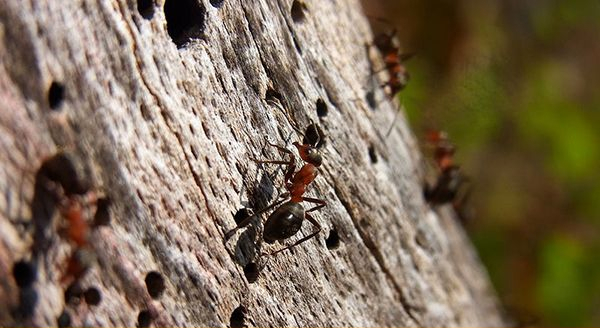
Food
Food or more specifically, insects, are the most common reason for woodpecker pecking. Your house can be secretly home to termites or other insects – expertly hiding beneath your sidings. To get to these insects, woodpeckers will use their beaks to create small holes in your siding.
Woodpeckers use their beaks to break through wood and dig out these insects. Or, they may linger around your garden, bushes, or grasses to forage for seeds, fallen fruits, insects, and nectar. While this behavior is essential for their survival, it can also lead to damage to your home or garden.

Nesting/Roosting
Woodpeckers may also use your home for nesting or roosting. This is usually more common in the winter months when food is scarce. The forest environment during this season is rough and unwelcoming for these drillers, so these birds are looking for a warm place to stay.
But backyard dwellers would do this even in summer or spring. These holes can be big since they fit themselves and their eggs and nest. If you find wood chips or sawdust around your home, a woodpecker has likely been roosting there.
Drumming
Woodpeckers will also use their beaks for drumming. They do this because the sound echoes better, which helps them communicate with other woodpeckers or attract mates if they’re searching for one. It’s also a way of marking their territory away from other woodpeckers.
If these birds nest near your home, you may hear quick machine-gun bursts from your walls or roof. While this behavior often only causes superficial damage, it can be pretty annoying.
Signs of Woodpecker Damage
The drumming and drilling may go unheard at times. But these solid and long-beaked birds leave obvious traces that point to no one else but them. These are the following signs woodpeckers leave:
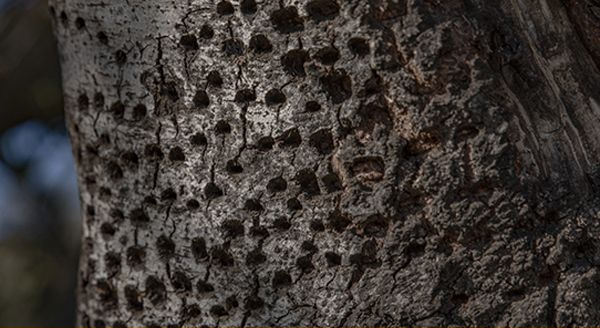
Nesting or roosting holes (excavations)
These birds will create large nesting or roosting holes in the wood. The size of these holes may vary depending on the species of woodpecker. But, regardless of the size, these excavations can cause structural damage to your home if left unchecked.
Sometimes, you may also find sawdust or wood chips around the holes. This is a sure sign that a woodpecker has been roosting or nesting in your home.
Woodpeckers will also strip the bark of trees and shrubs in search of food. This can cause extensive damage to the plant and may even kill it.
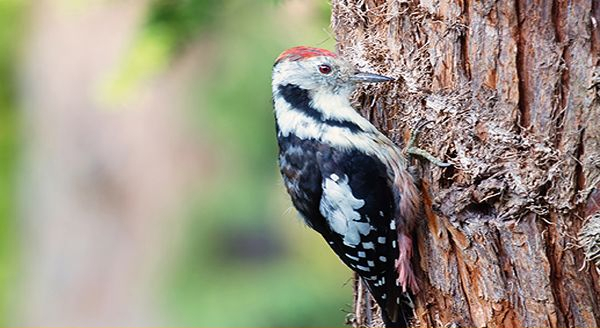
Foraging holes
Foraging holes are small holes that woodpeckers drill into the wood in search of insects. These holes are found in areas with a lot of insect activity. While foraging holes are not as damaging as roosting or nesting holes, they can still cause damage to your home if left unchecked.
You may also find wood chips or sawdust around foraging holes. This is a sure sign that a woodpecker has been searching for food in your home.
Drumming holes
Drumming holes are small, round holes that woodpeckers drill into the wood to create a loud drumming noise. These holes are typically found in areas where the wood is soft. The drumming holes may be the smallest compared to the previous two, but there can be countless traces.

What Woodpeckers Often Cause Damage?
Due to the common existence of Northern flickers in the United States, they are among those responsible for unsightly holes in your property. They are one of the few migratory woodpeckers in North America. They can be identified by seeing a yellow or salmon tint beneath their wings and tail feathers and a red or black mustache that extends from the beak gape to under the eyes.
Along with the northern flicker, the downy woodpecker and hairy woodpecker are also spotted destructors.
Dealing With Woodpecker Holes in House
We know countless of us have gone tired of this. Just casually enjoying the comfort of our home but suddenly noticing annoying pecks and seeing holes around our house.
They’re cute- that’s undeniable. But that doesn’t excuse them from wreaking havoc in your home. Here’s what you can do about it:
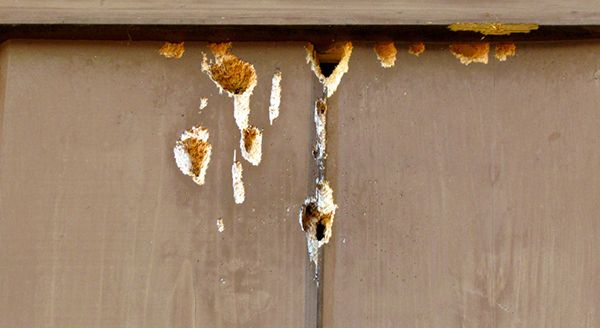
Inspect the damage
You can inspect damages by identifying the location, the holes’ size, and the damage’s severity, whether the woods or area needs a replacement or just a repair. This will give you a hint on what your next step is.
Check for pests
You might want to check if there are any pests in your house that are attracting these woodpeckers. Getting rid of these pests will ensure that the woodpeckers will no longer be drawn to your house.
Do Damage Control
Once you’ve identified the damages, it is important to do damage control as soon as possible. This will prevent the damage from getting worse and costing you more money in the long run.
Make sure to cover areas with plastic or other materials to protect them from further damage. Add suet feeders around your home to attract woodpeckers away from your house. You can also add birdhouses in your yard to provide a safe place for them to nest.
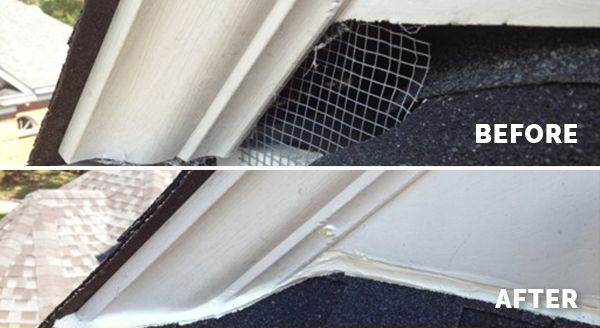
Repair Damage
For small holes in your sidings or shingles, you can try filling them with wood putty or caulk. For bigger holes, you can place a piece of wire mesh over the hole. This will discourage woodpeckers from drilling into the area again.
You may need to replace the damaged wood if the damage is extensive. This is especially true for siding and trim. Once you’ve replaced the damaged wood, you can repaint or stain it to match the rest of your home.
Make Peck-Proof Fortifications
You may want to consider conducting a minor renovation if you have older sidings. Replacing them with vinyl sidings can be beneficial since they deter pecking attacks. Another option would be aluminum ones.
These materials are not as appealing to woodpeckers since they can’t grip onto them as easily. The only downside is they usually don’t look as good as wood sidings and can be more expensive. There are also bird paints that you can use as a fortification. They usually have a taste and smell that deters birds.
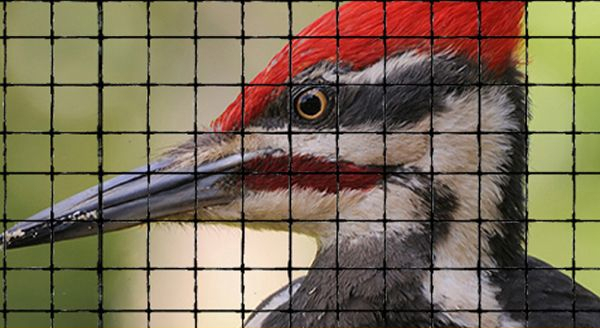
Woodpecker Control Methods
There are actually two known approaches when it comes to woodpecker control. Redirection and removal.
The most common and recommended method is redirection. This involves making some changes in your environment to make it less attractive to woodpeckers. As we’ve discussed earlier, you can do this by adding birdhouses or feeders in your yard. You can also try planting trees and shrubs that have berries since they’re a favorite food of woodpeckers.
The second method is removal. This is usually a last resort since it can be quite costly and time-consuming. You will need to hire a professional to do this for you. They will use various devices such as netting, baffles, and sprays to keep the woodpeckers away from your property.
Let’s take a more detailed look at each method:
Redirection
The most common and recommended method is redirection. This involves making some changes in your environment to make it less attractive to woodpeckers. This allows you to keep the woodpeckers away from your property without harming them.
Below are some of the most effective redirection methods:
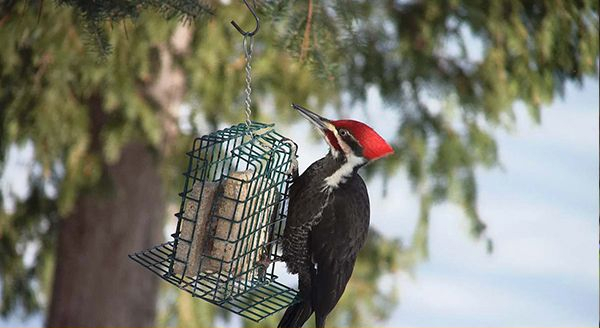
Feeding woodpeckers
You can set up a feeding station for woodpeckers about 10 to 15 feet from your house. The feeding station should include a variety of foods that these birds love, such as sunflower seeds, suet, fruits, and nuts. This will prevent them from drilling into the woods of your house.
It would also be best to place the feeder in an open area so the woodpeckers can see their surroundings.
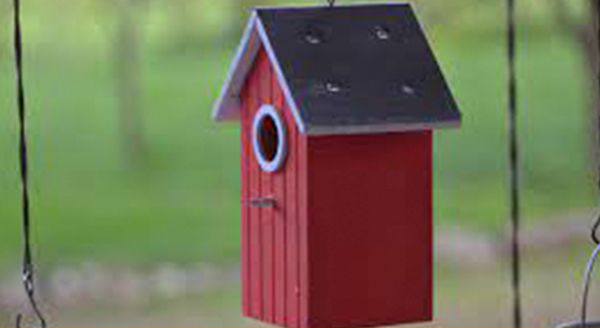
Woodpecker houses
Their sudden appearance on your property or wood-pecking activities can be a prelude to nesting. You can build or purchase cavity-type nest boxes designed for these birds in these cases. Place the birdhouses near the area where such activities have occurred since they’ll likely nest near that area too.
Drumming locations
You can also leave a stump or dead tree in strategic areas of your yard as an alternative drumming location for the woodpeckers. This will keep them from damaging your house siding or fascia boards.
Tree removal
You can opt for tree removal (if you have one) if these woodpeckers don’t stop lingering on your property. This will likely take care of the problem since these birds will have no place to land and nest. But, you should consider this method your last resort, especially if the tree is healthy.
Repair holes
Cover the drilling areas with mesh wire or hardware cloth. This will make it difficult for them to land and start drilling again. You can also use netting around the affected area, as this will also prevent them from being able to land and start drilling.
Removal Tactics for the Woodpecker
Removal tactics can be a more powerful solution if simple redirection tactics do not deter these woodpeckers. Here’s how:
Remove Food Sources
As mentioned, woodpeckers are attracted to areas where food is abundant. So, if you want them to leave your property for good, you must remove their food sources. This includes suet, nuts, and fallen fruits in your backyard.
It would help if you regularly clean up any spilled seeds on your property, as this can attract them.
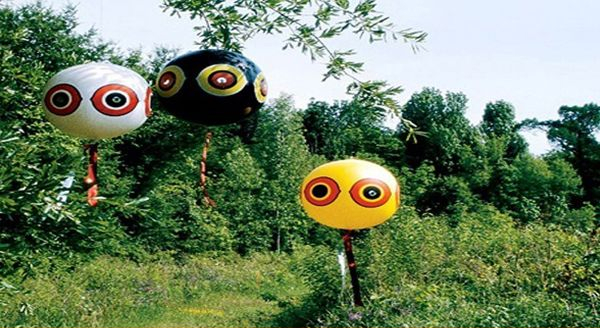
Visual Repellents
You can use commercial repellents to keep woodpeckers away from your property. These repellents usually come in visual aids, such as shiny objects, scarecrows, and balloons. This method keeps woodpeckers away by making them think there’s a predator in the area.
There are ways to make your visual repellents at home too. Some of the most effective DIY repellents are reflective tape and aluminum foil.
Other Repellents
If visual repellents are not available, you can also use noise repellents. These include air horns, radios, and ultrasonic devices. But, you should know that not all woodpeckers are bothered by noise. So, you might need to try different repellents before finding the one that works for your situation.
There are also commercial chemical repellents that you can use to keep woodpeckers away from your property. But, you should know that these repellents can harm the environment and other animals. So, you should use them with caution.
The most effective chemical repellents are capsaicin, anthraquinone, naphthoquinone, and metaldehyde.
Any acoustic deterrent can also keep woodpeckers away from your property. These repellents usually come in the form of devices that emit high-frequency sounds unpleasant to these birds.
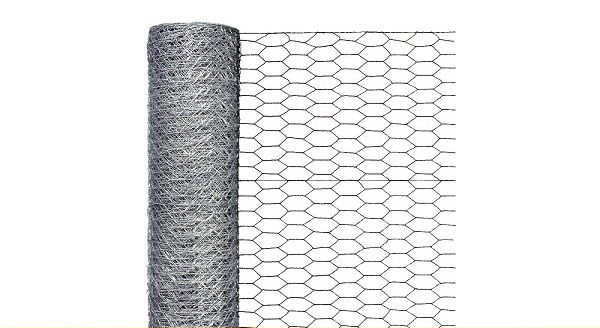
Covering Wood
You can also keep woodpeckers away by covering the affected area with mesh wire or hardware cloth. This will make it difficult for them to land and start drilling again. You can also use netting around the affected area, as this will also prevent them from being able to land and start drilling.
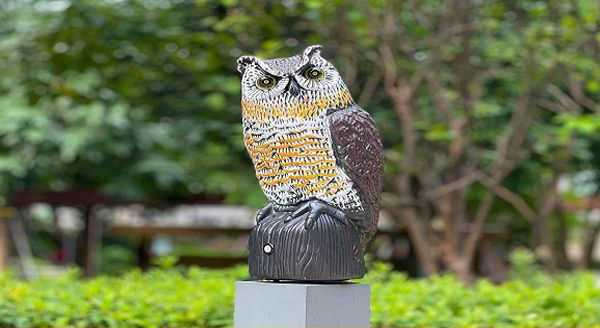
Decoy Birds
Decoy birds, as previously mentioned, are fake copies of other animals, their predators in this situation. Using plastic or rubber snakes, owls, or hawks as decoys. These are natural predators of woodpeckers, so they will be sure to stay away from your property if they see these decoys.
Hang metal objects (alternative drumming objects)
Another way to make loud noises is by hanging metal objects on your property. These can be old pans, pots, and sheets of metal. The wind will cause these objects to bang against each other and create a loud noise that will deter woodpeckers.
Hire a professional wildlife control company
You can also contact a wildlife removal specialist like us at AAAC Wildlife Removal to get rid of woodpeckers around your home. We will conduct a thorough inspection and come up with a plan to help you eliminate these pesky birds.
Need Help With Woodpecker Drumming On Your Property?
Your best partner for woodpecker removal as well as other infestations is AAAC Wildlife Removal. Trained, experienced, and highly professional. We’ve dealt with countless nuisance woodpeckers and other wildlife pests. Get in touch with us to prevent further woodpecker damage. Call us today for a quote!
Conclusion
Woodpeckers are fascinating creatures but when they start to drill on your property, they can become a nuisance. These birds can cause a lot of damage to your home and your property, so it’s important to take action to keep them away.
From holes in your siding to broken windows, woodpecker damage can be costly to repair so, it’s important to take preventive measures to keep these birds away from your property. Call AAAC Wildlife Removal if you’re dealing with woodpecker damage on your property, we will be more than happy to help!







